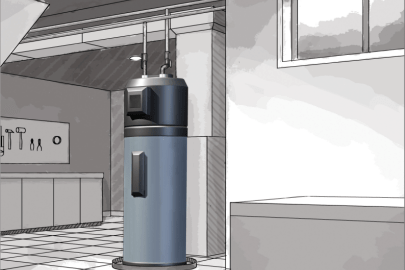Effective Techniques for Maintaining Your Home's Hot Water System
Effective Techniques for Maintaining Your Home's Hot Water System
Blog Article
What're your ideas about How to Maintain a Hot Water Heater in a Few Simple Steps?

Warm water is vital for everyday comfort, whether it's for a revitalizing shower or cleaning meals. To ensure your hot water system runs efficiently and lasts much longer, routine maintenance is key. This article gives sensible ideas and insights on just how to maintain your home's warm water system to stay clear of interruptions and pricey fixings.
Intro
Maintaining your home's warm water system could appear challenging, yet with a few straightforward steps, you can guarantee it runs smoothly for many years to find. This guide covers every little thing from understanding your hot water system to DIY upkeep pointers and recognizing when to call in specialist help.
Importance of Preserving Your Warm Water System
Routine upkeep not just extends the life expectancy of your warm water system yet also ensures it runs successfully. Ignoring maintenance can bring about reduced efficiency, greater power bills, and even premature failing of the system.
Indicators Your Warm Water System Demands Upkeep
Knowing when your hot water system needs interest can protect against major problems. Look out for indications such as irregular water temperature, unusual sounds from the heating unit, or rustic water.
Understanding Your Warm Water System
Prior to diving into upkeep jobs, it's useful to understand the standard components of your warm water system. Commonly, this consists of the hot water heater itself, pipes, anode rods, and temperature controls.
Month-to-month Upkeep Tasks
Regular regular monthly checks can assist catch minor problems prior to they intensify.
Purging the Water Heater
Flushing your hot water heater gets rid of sediment buildup, enhancing performance and lengthening its life.
Checking and Changing Anode Rods
Anode rods protect against corrosion inside the storage tank. Inspecting and replacing them when worn is vital.
Checking and Adjusting Temperature Setups
Adjusting the temperature setups makes certain optimal performance and safety.
Do It Yourself Tips for Maintenance
You can do several upkeep tasks on your own to keep your warm water system in top condition.
Looking for Leaks
Consistently examine pipelines and connections for leakages, as these can lead to water damages and greater expenses.
Examining Pressure Alleviation Valves
Testing the pressure safety valve ensures it works correctly and avoids too much pressure buildup.
Protecting Pipelines
Protecting warm water pipes decreases warmth loss and can save energy.
When to Call a Specialist
While DIY maintenance is helpful, some concerns require expert experience.
Complex Problems Calling For Professional Assistance
Examples include major leaks, electrical issues, or if your water heater is regularly underperforming.
Routine Professional Maintenance Benefits
Professional maintenance can include thorough inspections, tune-ups, and making certain conformity with safety and security criteria.
Verdict
Normal upkeep of your home's hot water system is vital for effectiveness, durability, and cost savings. By adhering to these suggestions and knowing when to look for expert help, you can make certain a reputable supply of hot water without unanticipated interruptions.
How to Maintain an Instant Hot Water Heater
Before tinkering with your hot water heater, make sure that it’s not powered on. You also have to turn off the main circuit breaker and shut off the main gas line to prevent accidents. Also turn off the water valves connected to your unit to prevent water from flowing into and out of the appliance. 2. When you’re done, you have to detach the purge valves’ caps. These look like the letter “T†and are situated on either side of the water valves. Doing so will release any pressure that has accumulated inside the valves while at the same time avoid hot water from shooting out and burning your skin. 3. When the purge valves’ caps are removed, you have to connect your hosing lines to the valves. Your unit should have come with three hoses but if it didn’t, you can purchase these things from any hardware or home repair shops. You can also get them from retail stores that sell water heating systems. Read the user’s manual and follow it to complete this task properly. When the hosing lines are connected, open the purge port’s valves. 4. You should never use harsh chemical cleaners or solutions when cleaning your unit. Make use of white vinegar instead. It should be undiluted and you’ll probably use about 2 gallons. 5. Now flush your water heater. This task should probably take about 40 minutes. We can’t give you specific directions for this because the procedure is carried out depending on the type, model and brand of your heater. With that being said, refer to the user’s manual. 6. When you’re done draining the unit, you have to turn off the purge port valves again. Remove the hosing lines that you earlier installed on each of the water valves. Put the valve caps (purge port) back in their respective places and be very careful so as not to damage the rubber discs that are found inside these caps. 7. Now that everything’s back in place, check your user’s manual again to find out how to reactivate your water heating system. 8. Once it is working, turn one of your hot water faucets on just to let air pass through the heater’s water supply pipes. Leave the tap on until water flows smoothly out of it. https://www.orrplumbing.com/blog/2014/september/how-to-maintain-an-instant-hot-water-heater/

We were shown that report about What Kind of Maintenance Do Water Heaters Need? through a pal on a different blog. Do you know about somebody else who is in the market for the topic? Please feel free to share it. I praise you for your time. Revisit us soon.
Book Today! Report this page